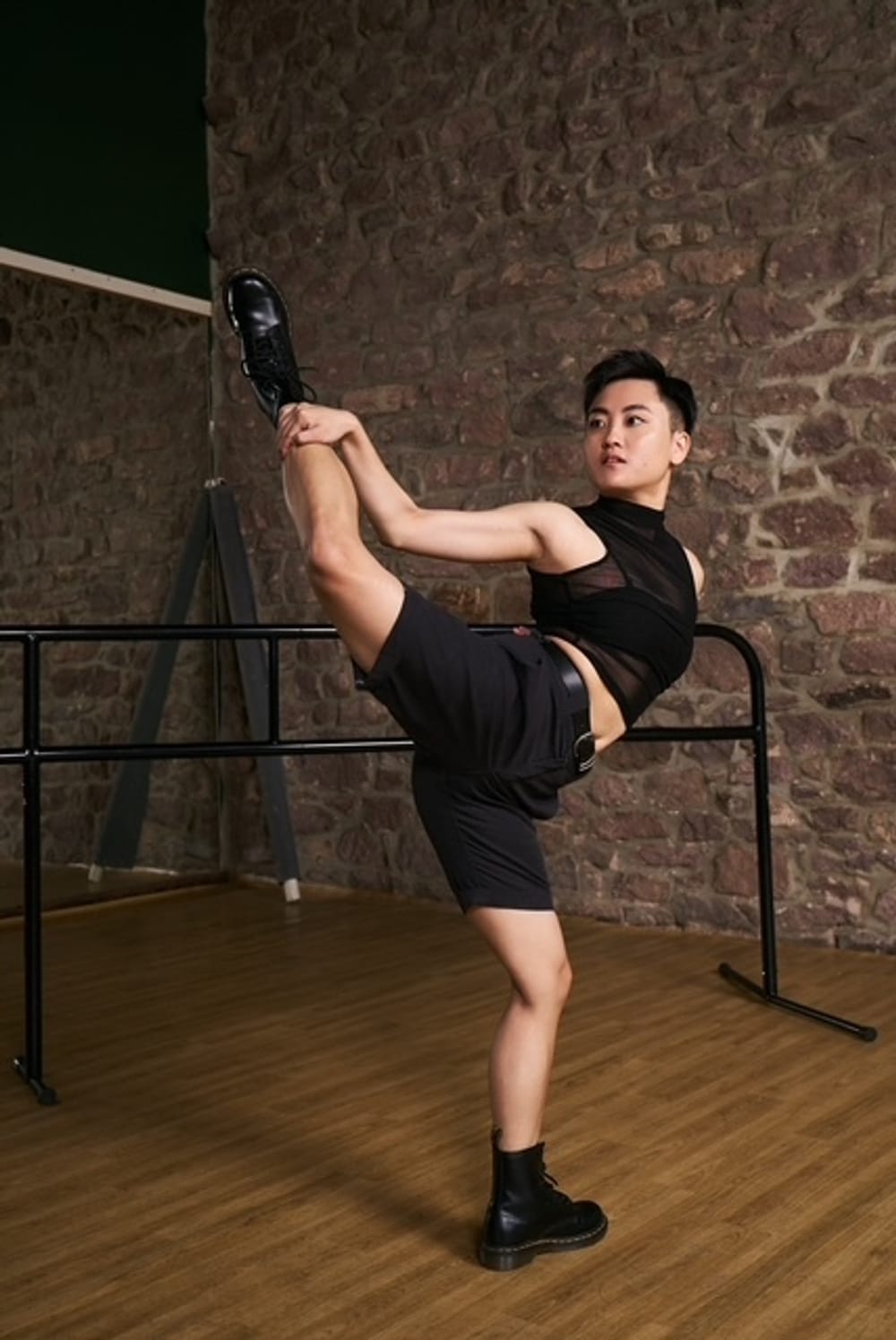Stay in the Loop
BSR publishes on a weekly schedule, with an email newsletter every Wednesday and Thursday morning. There’s no paywall, and subscribing is always free.
Why is the gender binary so entrenched in dance?
Philly’s trans and nonbinary artists push the gendered boundaries of dance

For the past few years, Philadelphia’s most interesting and enjoyable movement-based performances have featured trans and nonbinary artists who engage audiences while pushing the boundaries of the industry itself.
In 2023, Toni Cannon’s ReFlection told a powerful story of transmasc self-acceptance through circus arts and dance theater. Earlier this season, Kendall Niblett’s solo was a highlight of Kun-Yang Lin/Dancers (KYL/D)’s Luna (月). On a national level, Dance Magazine, The New York Times, Pointe Magazine, and others have profiled nonbinary dancers. The increasing visibility and representation of openly non-cis performers raises questions about traditional gender roles in dance and other performing arts. Why is the gender binary so entrenched? What could more inclusive conceptions of gender (and less gendered performances) look like? I sat down with Niblett and Philly-based performer, educator, and choreographer Em Godfrey to hear more.
“A source of joy and pain”
Niblett has danced with KYL/D for two seasons. Growing up in a small town in Alabama, they began dancing in the local studio where their mother taught. Both dance and being trans are “about the body” and “being focused on the body,” Niblett observed. Dancers use their bodies as instruments; they constantly practice and rehearse in front of mirrors. Meanwhile, the body can be “a source of joy and pain” for people undergoing gender transition.
Niblett has been in this process while dancing with KYL/D. The city offers “so many wonderful resources,” Niblett said, including the Mazzoni Center and support for medical transition. “Our assigned gender at birth can be suffocating,” they noted, and I cannot disagree. Instead of conforming to the gender binary, trans and nonbinary folks live beyond it. “I knew very early on that I wanted to be somewhere where I could be myself and be different and that would be celebrated,” Niblett said.
Godfrey also got an early start in dance, and it has always been part of their life. In college, they moved toward contemporary dance, where gender is less rigid. In ballet, gender remains “a foundation,” with existing works full of “very gendered” roles. This is true from Swan Lake to Jewels to Rodeo. Being what Godfrey calls a male (or male-bodied) dancer means you lift, while being a female (or female-bodied) dancer means you are lifted, they explained. This shorthand makes sense, though it is problematic.
Dance business as usual
Lifting—or being lifted—is a skill, not a trait. And what about dancers whose bodies do not correspond to gender expectations? I thought of three young students on Dance Life, the docuseries following a class through its year of full-time training at Australia’s Brent Street Studios. Archer is tall, gorgeous, and nonbinary, which creates trouble with casting and costumes. Emily and Max O. are cis, but their bodies are liabilities. Nobody comments on Emily’s weight, but teachers tell her to improve conditioning and sexiness. Meanwhile, they fret that Max O.’s short stature will restrict his career opportunities.
This is reality for dancers, who face gendered casting calls that resemble the separate sections for men’s and women’s jobs that were common until the early 1970s. “Help Wanted: Male” and “Help Wanted: Female” sound unthinkable in today’s workplace, but this is business as usual in dance. Godfrey sent me a screenshot of a casting call at a well-known company in New York that spelled out “male audition” in large, capital letters. Established dance companies often perform works from their repertory, Godfrey explained, and there is little incentive to change what worked in the past.

This is a shame, especially considering greater expanses of gender and creativity in other performing arts. My colleague Cameron Kelsall, who reviews theater and opera, reports having seen every kind of Shakespearean gender swap imaginable. In dance, though, nontraditional casting and pairing remain rare, and gender swapping tends to be comic. Think of male dancers portraying the ugly stepsisters in Cinderella for laughs, or Les Ballets Trockadero de Monte Carlo combining ballet with drag. As an art form, dance seems to offer limitless creative freedom—no translation, supertitles, or interpretive signs required—while constraining gender and the body within convention and tradition. As a dance lover, queer ally, and feminist, I would like to see more nontraditional casting that highlights new interpretations, ideas, and aesthetics. Consider a genderqueer Romeo and Juliet, a women’s trio performing “Sinner Man” in Ailey’s Revelations, or men dancing beautifully en pointe.
“Bodies on stage”
Niblett and Godfrey agreed that methods of auditioning and casting dancers must change. “Using gender as a tool for casting is so limiting,” Godfrey said. Both dancers suggested grouping performers by height instead of gender. Costumes are another problem. These are usually gendered, even in abstract works, and they play “a huge role in how dancers are perceived onstage,” as Godfrey noted. Is the gender binary really that crucial to so many dances? Then there are the leotards. Godfrey does not like wearing a leotard at all, and neither did I.
These conversations led me to consider the highly gendered introductions to performing arts children receive via story ballets, musical theater, theater, and opera. They left me wondering how dance could focus less on gender and more on what Godfrey called “bodies on stage.” One way is for Philadelphia to see more of Godfrey, Niblett, and other talented dancers whose depth and nuance defy gendered conceptions of strength and grace.
At top: Philly performer Em Godfrey wants more dance free from gendered expectations. (Photo by Muvmentphotography.)
Sign up for our newsletter
All of the week's new articles, all in one place. Sign up for the free weekly BSR newsletters, and don't miss a conversation.

 Melissa Strong
Melissa Strong